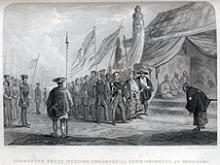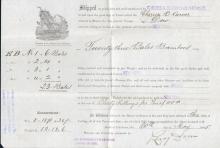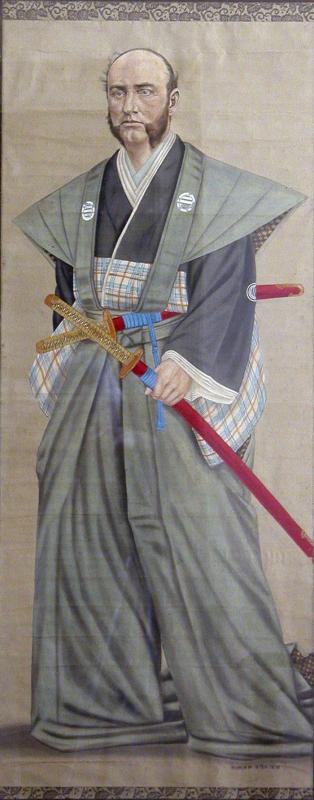Japan
Commerce with Japan began after American Commodore Matthew PerryPerry, Matthew Matthew Perry
1794-1858. Commodore Matthew C. Perry is best known for taking four warships to Japan in 1852, an event that led to the opening of Japan to foreign trade and the overthrow of the feudal government. arrived in 1853 at the port of Shimoda, Japan, and demanded Japanese ports be opened for trade. Japan been ruled by shogunsShogun shogunate
The title used in Japan for chief military officers, from the 8th through 12th centuries, and then applied to the hereditary rulers of Japan until 1868, when the shogunate was ended and rule returned to the emperor. for about 700 years. The capital city had been established at Edo, now Tokyo, and was the world’s largest city from the late 17th to the early 19th centuries. Trade had been cut off with all countries except China and Holland, because the shogun wanted Japan to remain free of outside influences. Japanese society was largely medieval in style, highly organized, and agricultural, but they also practiced mining, forestry, and fishing. Whaling has a long history in Japan.
Perry’s visit initiated a period of civil war, and eventually the shogun stepped down. In 1868 the emperor announced the official return of imperial power, the Meiji RestorationMeiji Restoration
Revolution in Japan in 1866-68 that "restored" the Emperor's rule by ending the 250 year feudal rule of Tokugawa shoguns, opening Japanese ports to the West.
Read more. American trade with Japan expanded after the Civil War.
The Bill of LadingBill of Lading
A document issued by a carrier, such as a ship's master, acknowledging that certain goods have been taken on board for delivery to a specific person or place. from the Clarissa B. Carver, Captain Dow, Searsport, shows a cargo of 23 bales of bamboo going from Yokohama, Japan, to New York. She was sunk by a steamerSteamer steamboat,steamship
A mechanically-propelled vessel in which the principal motive power is steam, as opposed to a sailing vessel or motorship. Steamboats traditionally were the sometimes sizable coastal steamers, while steamship referred to ocean going vessels. near Kobe, Japan, nine days later.



